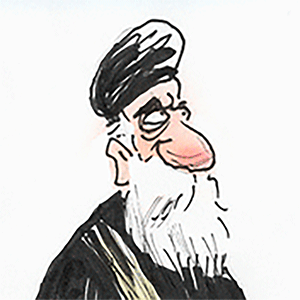AI is fast-tracking climate research
Published in News & Features
Artificial intelligence is giving some climate research projects a much-needed boost at a time of worsening extreme weather and funding cuts that threaten science in the U.S. and elsewhere.
While generative AI faces criticism due to the large amounts of power required to train and run sophisticated models, it also holds the promise of advancing science.
“It’s a gigantic step forward,” says Ángel Borja, a biologist at AZTI marine research center in northern Spain. “It will allow us to process data and get results much faster, so people that make decisions can act faster, too.”
Researchers are teaching existing AI models and creating new ones to perform routine tasks that would require several people to work for weeks or even months. Data gathered in scientific expeditions from the bottom of the oceans to the farthest corners of Antarctica can now be catalogued in a matter of hours.
To be sure, the use of generative AI has its dangers, some scientists warn. Machine learning techniques are tools that should never replace human thinking, writing and analysis, said Jonathan Foley, the executive director of Project Drawdown. The organization, which uses scientific data to provide guidance on climate solutions, has limited the use of AI assistants to simple tasks like checking grammar, formatting documents and scraping information from dispersed sources.
“By definition, generative AI relies on plagiarism (albeit in a statistical sense) and often fabricates information, citations, data, and creative content,” Foley said.
But that hasn’t stopped other researchers forging ahead. Here are three examples.
AI helps marine researchers to ‘reach faster conclusions’
Borja remembers gathering data manually and filling databases with hundreds of measurements when he started doing scientific work 45 years ago. The rise of computers and the internet helped speed up some of that work. But AI’s growth over the past three or four years has felt like something completely different and more transformative, he said.
“My younger colleagues worry that AI will steal their jobs, that it will make us unnecessary,” he said. “It’s the other way around: We’re advancing so much because AI is doing routine work that takes us so many hours, and we’ll be able to focus on interpreting that data.”
AI is set to turbocharge what the center can offer policymakers, Borja said, allowing them to make more-informed decisions. Scientists at AZTI work closely with policymakers to, among other things, establish fishing quotas and set up marine protected areas.
ATZI researchers have started feeding millions of data points gathered over three decades into an AI model. The data includes everything from water quality to the presence of different types of fish and plankton. The model then produces research notes that tell scientists what information is in the database and how it’s structured, allowing researchers to more easily decide which datasets to use for their investigations.
The center is also using videos and pictures from research expeditions to train another model to recognize different types of fish and marine life. The task currently requires scientists to watch hundreds of hours of underwater video footage, and manually record which species appear, where, how often and how abundant they are.
“It will allow us to reach faster conclusions on the state of the marine environment in certain places,” Borja said. “I expect within the next five years, we’ll see an explosion of AI applications in scientific fields and in ways I can’t even imagine right now.”
Weather forecasting becomes more accurate
Some AI-powered models are already outperforming conventional forecasting systems. Microsoft Inc.’s Aurora has been trained on over a million hours of diverse geophysical data. In 91% of the targets established by its creators, it is more accurate than the traditional model from the European Centre for Medium-Range Weather Forecasts and Google DeepMind's AI model GraphCast.
It’s able to predict, among other things, air quality, waves and tropical cyclone paths, according to a research paper authored by Microsoft Research employees in the May edition of Nature. Aurora can perform these tasks at a fraction of the computational cost compared to traditional models, they said.
“AI models such as Aurora can enable climate scientists to explore hundreds of times more scenarios than they can today, helping to unlock new insights at scale,” said a Microsoft Research spokesperson.
AI models are somewhat of a black box compared to their traditional weather counterparts, which worries some forecasters. But high-quality weather information is the first step to setting warning systems that give people time to find shelter when extreme events hit.
Citizen scientists get an AI assist
The combination of humans and AI can provide the best results for scientific research, according to a paper published last year in Citizen Science: Theory and Practice. Lead author Nirwan Sharma, a computer scientist at The Open University in the UK, started using natural language generation — an early name for what’s now known as generative AI — in 2010 for a citizen science project.
People were encouraged to send Sharma and his co-researchers pictures of bumblebees as they walked in the woods or worked in their gardens. AI would then identify which of the 22 UK bee species they had spotted, and researchers would verify the AI’s work. Finally, citizen scientists would get an automated email thanking them for the contribution and revealing the type of bee they photographed.
The model, a partnership between Aberdeen University and the Bumblebee Conservation Trust, correctly identified species about half the time, a rate on par with untrained human users. Initially, about 10 people were required to identify the type of bee correctly. As the model learned more, it helped cut down on the number of people required to as little as three.
Using the large amount of pictures gathered over the years, researchers trained the model to identify the plants that bees were photographed on, allowing it to provide planting recommendations depending on the types of bees citizen scientists wanted to attract.
“Much of the knowledge about how to identify species is bottled up in scientific journals or places which are really difficult to access for people,” Sharma said. “AI is another piece to improve our learning — it’s a means to have a dialogue with that knowledge.”
____
—With assistance from Akshat Rathi.
©2025 Bloomberg News. Visit at bloomberg.com. Distributed by Tribune Content Agency, LLC.







Comments